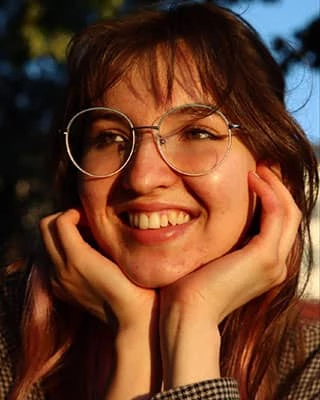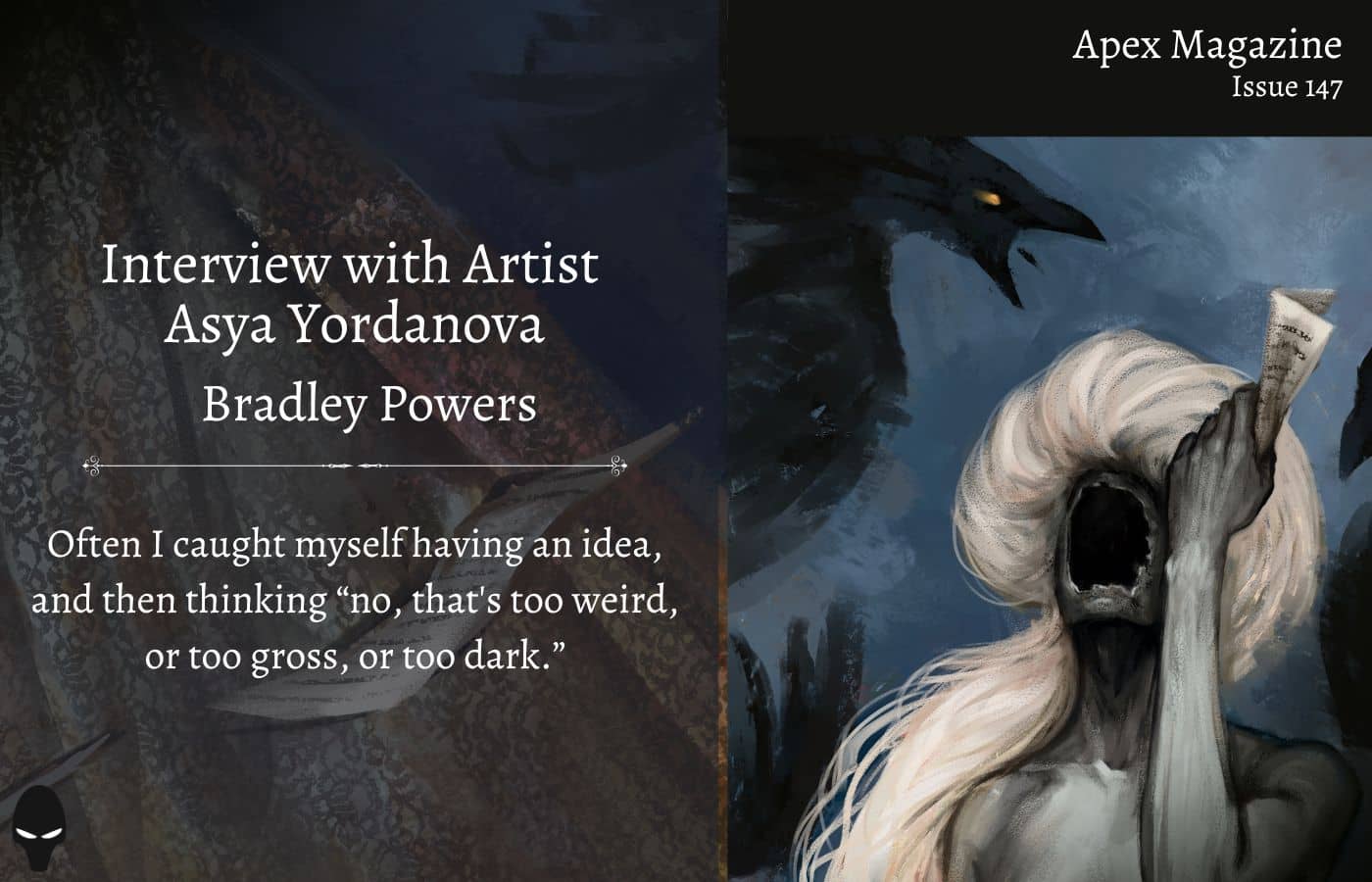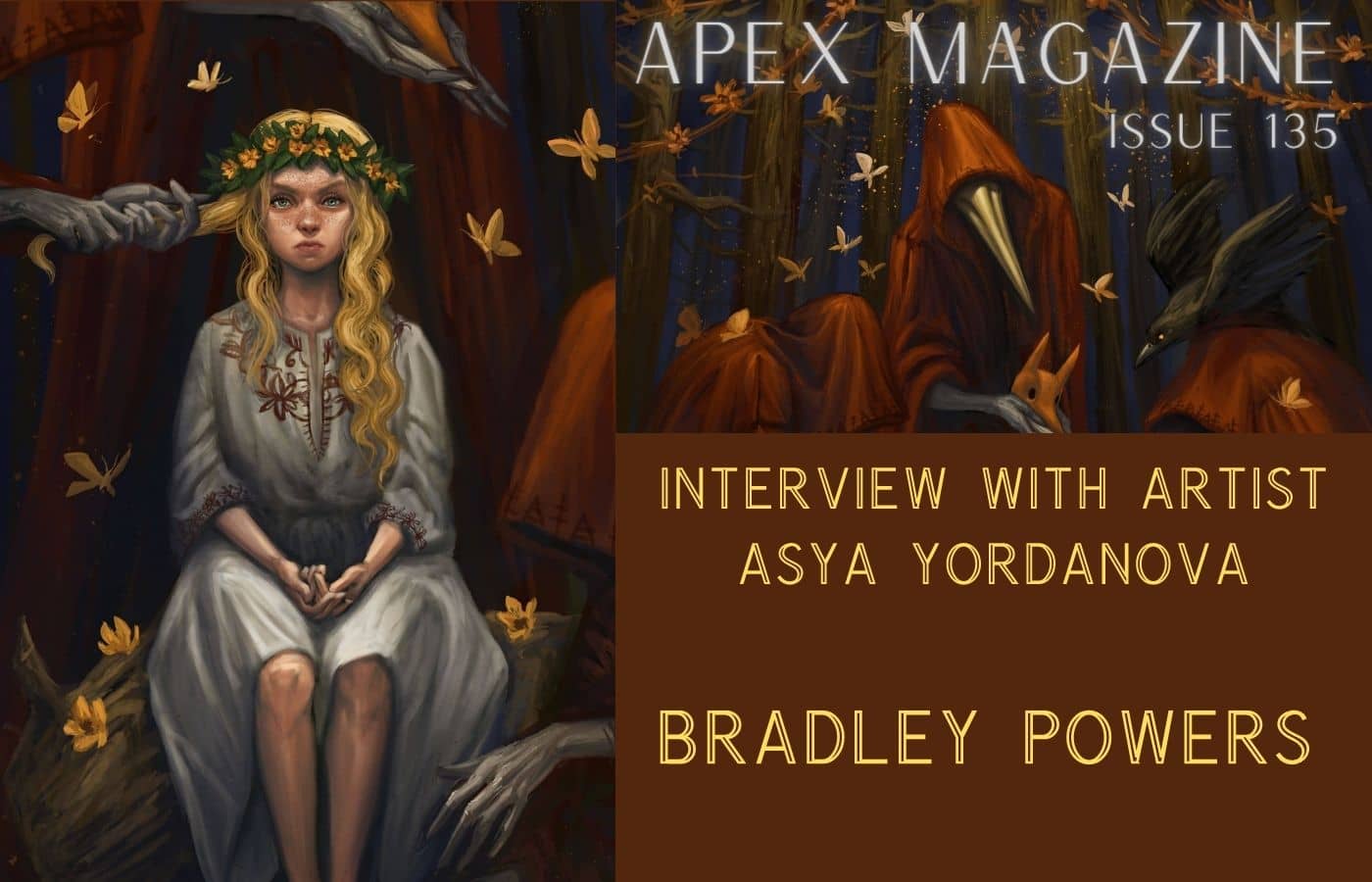
Asya Yordanova created the terrifyingly whimsical piece, “Sacrament,” which is the cover of this month’s issue of Apex Magazine. Asya is a self-taught Bulgarian illustrator specializing in dark fantasy and horror imagery. Her work is influenced by her love for folklore, mythology, and dark art. Over the last 12 years she has created artwork for various projects, but her biggest passions are book/short story illustration and character design. She has contributed illustrations for S. Alessandro Martinez’s poetry book Dreams of Decay, Weird Tales magazine, Bitcoin magazine, the webcomic “Romantically Apocalyptic,” and character and creature designs for the role-playing game Streets of Peril. Her work has been featured in ImagineFX magazine and the art anthology, Codex Obscurus. Currently she is mainly working on concept art for table-top games.
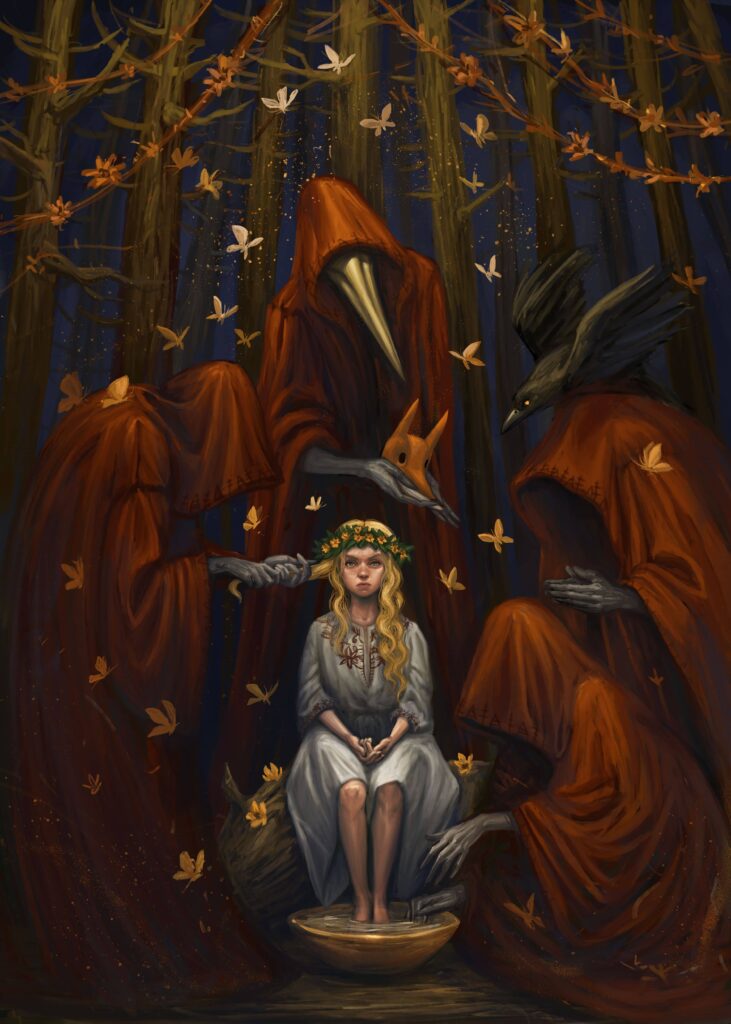
APEX MAGAZINE: All of the works you’ve posted recently appear to have been drawn digitally. Explain the process of your digital paintings. Have you always made digital art or have you transitioned to it after working with other media?
ASYA YORDANOVA: Actually most of my digital paintings start as traditional watercolor and gouache sketches—some rough, some quite detailed. While I very much enjoy painting with gouache and acrylics, traditional painting is more time demanding and needs more preparation, so I rarely do complex illustrations this way. Sadly, at this point I just don’t have the time. However, what I’ve found works best for my creative process is watercolor sketches. The random ways the paint splashes creating interesting organic shapes has helped me with artist’s blocks over the years. Very often I create the color palettes for digital paintings this way, too. On my Instagram and FB pages I occasionally share mock-ups where I show the sketch versus the finished painting. (You can see this here.) Years ago, when I started getting serious about my art, I actually did highly detailed pencil illustrations, which I later scanned and colored digitally.
AM: Your work often seems to involve religion. How do your personal beliefs affect your work?
AY: I’m not a religious person. However, I’m fascinated by beliefs, superstitions, pagan customs and practices, especially Slavic ones. I like depicting rituals; there is a solemnity to them which I find fascinating.
AM: In your work, “Birds of a Feather,” you’ve drawn a figure in a traditional Bulgarian costume. How has living in Bulgaria and Bulgarian culture influenced your artwork?
AY: As most artists, I strive to make art that’s distinct and recognizable. I’ve drawn inspiration from Bulgarian traditions and costumes for quite some time, but just recently I’ve come to the realization that while Slavic traditional clothing is beautiful, it’s not that common in fantasy character art. So I got inspired to try to create designs that are vaguely based on Slavic costumes, but with a dark fantasy twist. The dress I painted in “Birds of a Feather” is loosely based on some traditional costumes, but is overall made-up. I’d rather not use any original motifs directly, but just take inspiration from them and create my own. As Bulgarian traditions and folklore are what I’m most familiar with, it came naturally to me to use such elements in my work.
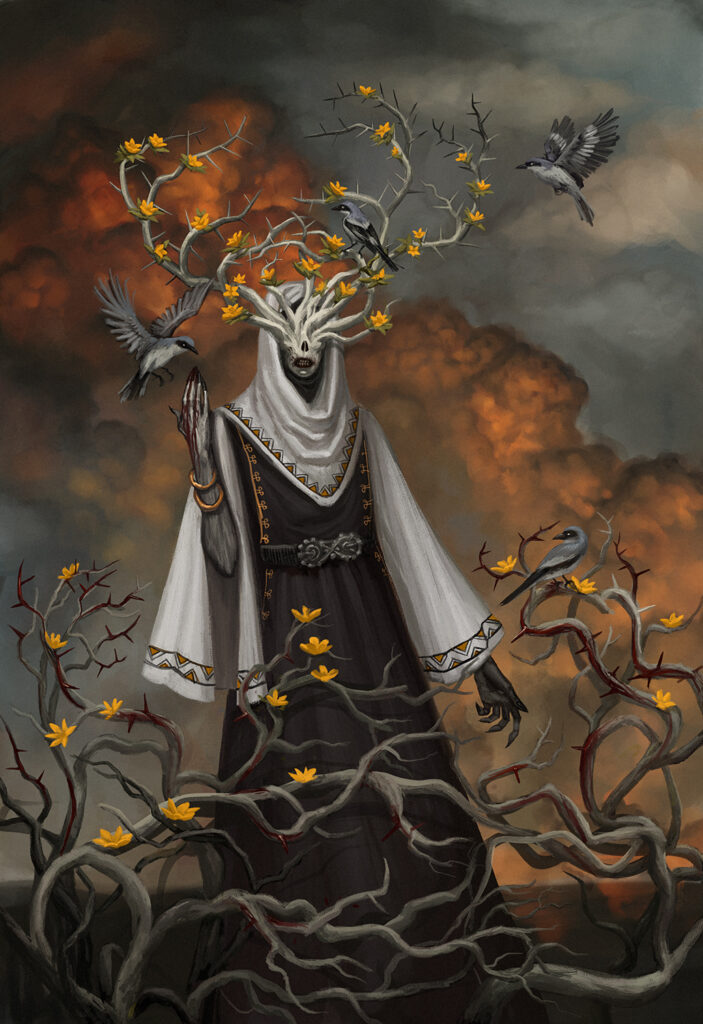
AM: You listed your favorite artists and they are mostly artists who work in fantasy, specifically dark fantasy. How have fantasy movies, books, and stories affected your life in general and also as an artist? Can you point out any that have had a particular impact?
AY: Ever since I can remember, I’ve been fond of spooky stuff–Brothers Grimm fairy tales, The Addams Family, Stephen King books. Growing up in the 90s I adored Tim Burton’s movies: Beetlejuice, Batman Returns, and Sleepy Hollow. I enjoyed how unusual the characters were. In later years, Guillermo del Toro’s Pan’s Labyrinth and Hellboy: The Golden Army were the two movies that visually affected me the most. I fell in love with the lavish designs and the bold colors, and I suppose their impact can be seen throughout my work.
AM: There often seems to be a relationship between something threatening and something delicate in your work, sometimes even both in the same creature. There is something truly striking and beautiful about this contrast. How and why do you portray these qualities?
AY: I like the juxtaposition. The first paintings I did this way, I would describe as grotesque creatures in picturesque surroundings. In my personal work I’m not that interested in painting monsters and villains. I find it more exciting to create these slightly ambiguous characters. They look creepy, but (hopefully) not inherently evil. By adding delicate elements, I give them human-like traits to make them more interesting. Hopefully the viewer will hold their gaze a bit longer, examining the details, wondering what the backstory is. Occasionally I like to add some whimsical elements to my illustrations, like a hidden joke in an otherwise macabre artwork. I enjoy art that’s both creepy and somewhat wholesome, if that makes any sense.
AM: Many of the figures in your works have their eyes obstructed from the viewer, either simply by a lack of eyes, a covering, eyes all in one color, or something coming out of their eye sockets. It certainly succeeds at creating a creepy effect, but what is the purpose and influence of this choice?
AY: I just think removing or hiding the characters’ eyes adds a layer of mystery. They say the eyes are windows to the soul. In visual art, the face, eyes, and facial expression set the tone of the painting. Having the character wear a mask, or at least hiding the eyes makes them more intriguing and eerie, in my opinion. As we can’t see their eyes, we don’t know what they’re thinking, what their intentions are. I find that creepier than an evil looking face or an angry stare. Furthermore, a mask or a helmet that is devoid of any human features is even creepier to me. The lack of eyes or a face lets the viewer fill in the blanks themselves and leaves more room for interpretation. One thing I really love is reading people’s interpretations of my illustrations. Now that I think about it, the lack of eyes in my characters might be a continuation of my wish to make them ambiguous and uncanny.
AM: Thank you so much, Asya, for letting us explore the fantasy world of your work! You can check out more of Asya’s work at deviantart.com/asyayordanova and instagram.com/asyayordanovaart/.









